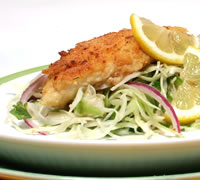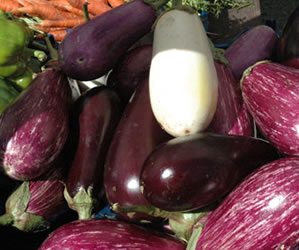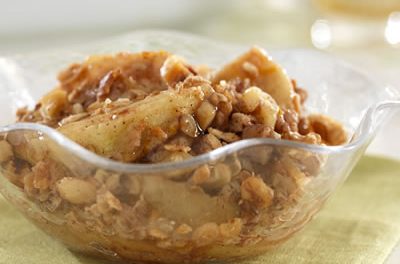Meatless meals can be a great step toward healthy eating, but simply eliminating meat does not make a meal low in calories. Depending on what else it contains, a meatless meal can be lower or higher in calories than one that includes meat. A balanced, meatless meal includes some grains, a small portion of a non-meat protein, and lots of low-calorie vegetables.
How many calories will you save if you switch from chicken and pasta to a meatless pasta dish, dropping the chicken and just doubling your usual pasta portion? None. In fact, substituting an extra cup of pasta for a modest three-ounce portion of skinless chicken adds about 15 extra calories to the meal's total. Trading in a small lean pork chop and potato for one and one-half cups of packaged macaroni and cheese increases the calorie load from 350 or 400 to over 500.
But don't let these figures discourage you from experimenting with more meatless meals. A plant-based diet that emphasizes vegetables, fruits, grains and beans is one of the most important steps we can take to lower our risk of cancer, according to the American Institute for Cancer Research (AICR). These foods are important sources of vital antioxidants, dietary fiber and anti-cancer phytochemicals.
The two most important keys to including meat in healthier eating are lean cuts and modest portion sizes. The standard portion of three ounces (about the size of a deck of cards) is plenty for most people. Select skinless breasts instead of wings and loin or sirloin instead of ribs and sausage. These steps reduce your risk of cancer and heart disease, and rein in the high calorie count that results from high fat content.
Whether you choose to include a small amount of meat or eliminate it entirely, the vegetable portion of the meal will contain the bulk of calories. Grains and starchy vegetables like potatoes, corn and peas are more concentrated in calories than other vegetables. If most of your plate is filled with these foods, the meal's overall calorie count will be higher than if your plate was mostly filled with vegetables that are less concentrated in calories.
Regardless of your preference � some meat or meatless � boost the portion size of vegetables to satisfy your appetite. At home, this might mean doubling the usual amount of broccoli or peppers in a stir-fry or casserole. Adding a plate of raw baby carrots or celery for nibbling at the table is another easy option.
When eating out, look for opportunities to add vegetables or fruit in soups, salads and side orders. At a table service restaurant, ask for a double vegetable portion.
The two major elements of a meal that promote both overall health and weight control are proportion and portion size. If you don't include a small amount of meat, poultry, or seafood, add a meatless protein to the meal, like beans, nuts, tofu, or a low-fat dairy product. Don't overdo the complex carbohydrates like bread, potatoes and pasta. Although they offer lots of good nutrition, their calories can add up more quickly than we realize. Instead, give a variety of interesting vegetables and fruits the major role in your meal, and you'll enjoy great nutritional value but with a very low calorie "price."
0
AICR







